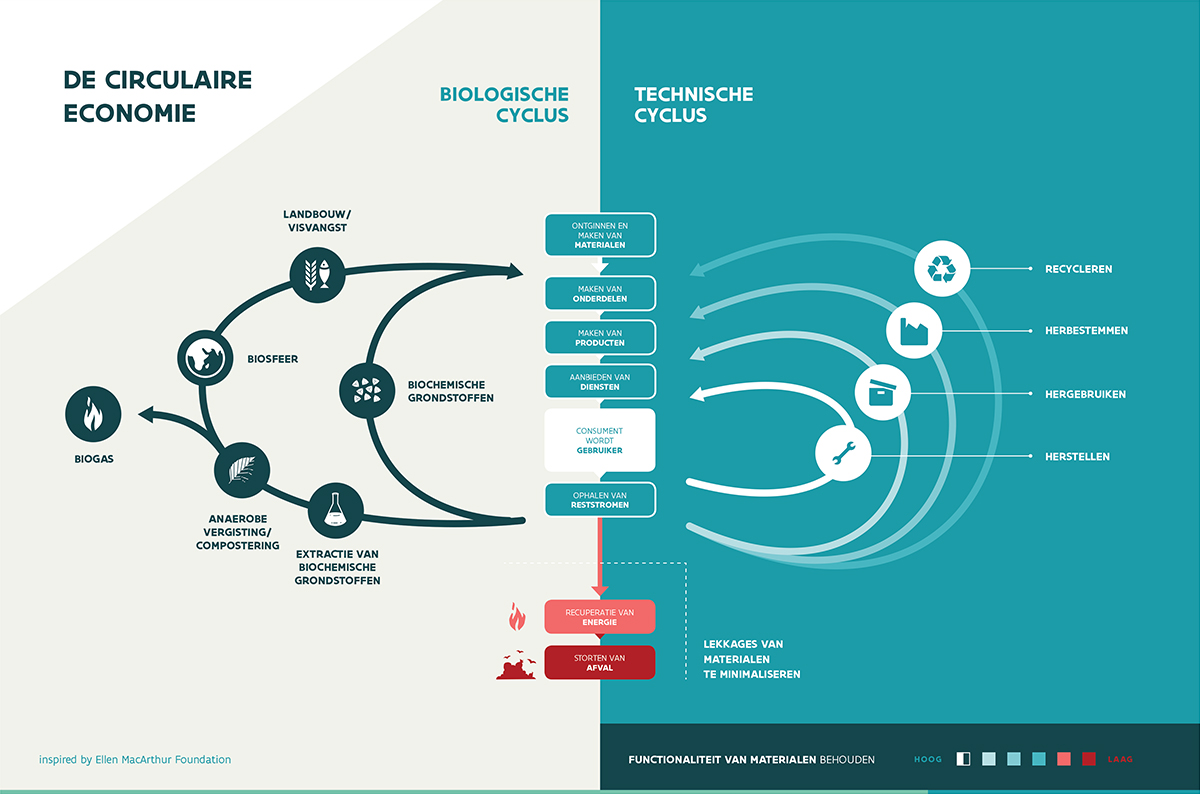Topics
We organise our actions in six thematic & strategic agendas:
Strategic Agendas:
Bio-economy
Circular Construction
Chemicals/Plastics
Manufacturing Industry
Food Chain
Water Cycles
Seven leverages provide additional support:
Leverage effects:
Lever Policy Instruments
Lever Circular Procurement
Lever Communication
Lever Innovation & Entrepreneurship
Lever Financing
Lever Jobs & Skills
Lever Research
What, why and how?
Why are we pursuing a circular economy?
Future visions 2050
How do we see our circular future?
About our management
Who steers what at Flanders Circular?
Circular psychiatric care home
Circular Psychological Care Home for OPZ Geel
The Public Psychiatric Centre Geel has been working according to sustainable building principles for its building projects for years. Lately, we have taken that interest in sustainability to a higher level and now we are ready to take the first step towards circular construction.
For example, with the Circular PVT project we want to design and build a new Psychiatric Care Home in which we, in cooperation with the Osar architectural firm, try to incorporate circular building principles into the process as much as possible.
We consciously choose building materials that are reusable in the long term, without losing sight of our budget. We strive to work with sustainable materials that are not only of value to us as the client, but also to the environment. For example, we opted for more sustainable alternatives for the facade (by working with the sustainable system of Facadeclick), the cavity insulation (based on lactic acid) and the ceilings (cooling and heating system based on clay).
In this way, we not only want to comply with future building standards regarding energy performance, among other things, but we also want to set an example and break down old barriers.

OPZ Geel
Partners Osar architecten, Hooyberghs NV
Sectors
Themes
Organisations
Website
MOST IMPORTANT
RESULTS
- Most of the circular goals that we had set were achieved: the facades were built with click bricks, we used sustainable clay for the ceilings and the sustainable cavity insulation was also (partly) successful.
- We worked together with a social enterprise that is committed to the sustainable employment of target group employees. Thanks to the work experience they gained during our project, they can later move on to the regular employment circuit.
- This project is an inspiring example of good practice and an important signal to other institutions and companies. The combination of sustainable building and social employment can offer great perspectives for local authorities.
MOST IMPORTANT
LESSONS LEARNED
- Circular construction is making great strides, but still has to deal with many negative (pre)assessments. It was not always easy to convince partners of the real added value. Nevertheless, this project has taught us that, as a builder, we must dare to demand circularity as a necessary criterion.
- The construction sector is very attached to methods that have already proven their worth. Failure costs can be very high. But the future vision of a project must not be forgotten: for example, there is a big difference between a residential project for quick sale and the construction of a care home.
- It is often thought that circular construction is more expensive. We were able to prove them wrong. The provincial government also used our project presentation to get local authorities to think about circular construction for planned projects, combined with social employment.
WHAT DOES
THE FUTURE HOLD?
Thanks to this project, we were able to take the sustainable aspect of our construction projects to the next level. It can become a milestone for many future plans. In addition, we would like to play a pioneering role and engage in dialogue with other actors about their future projects. Local authorities or other organisations are therefore always welcome to visit us.
















